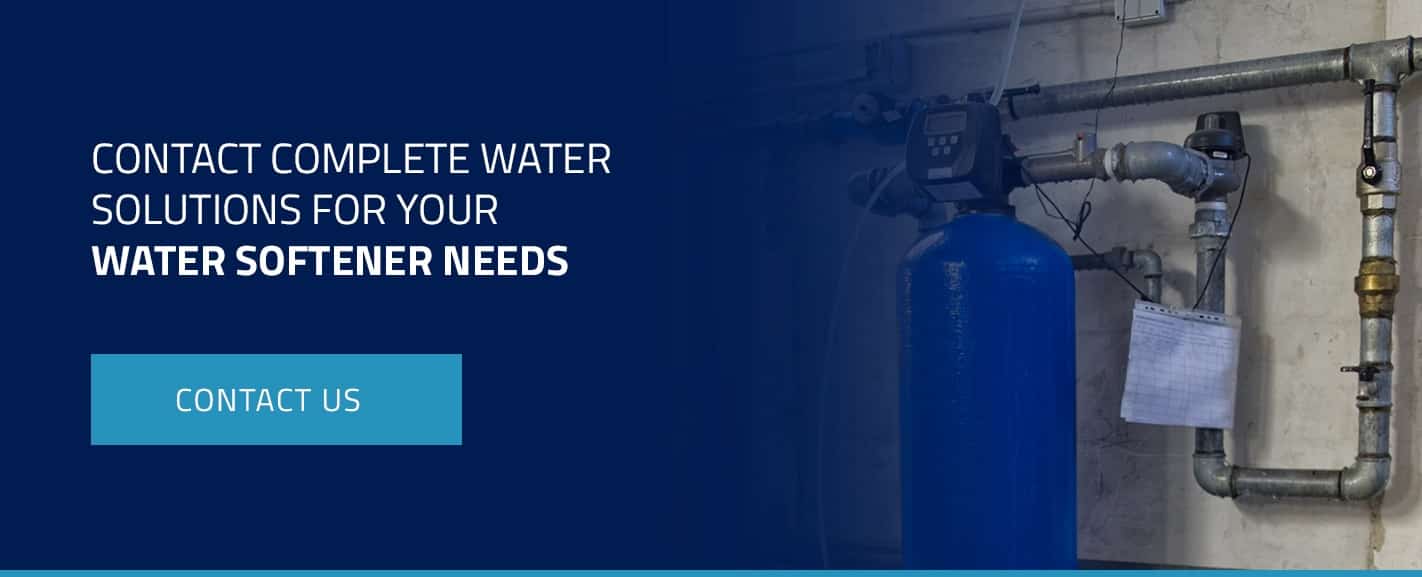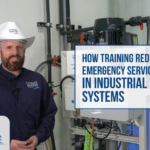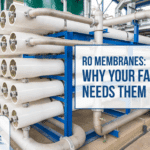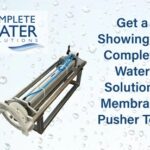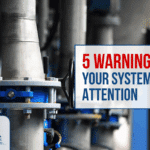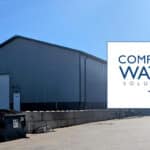Maintain an Industrial Water Softener System
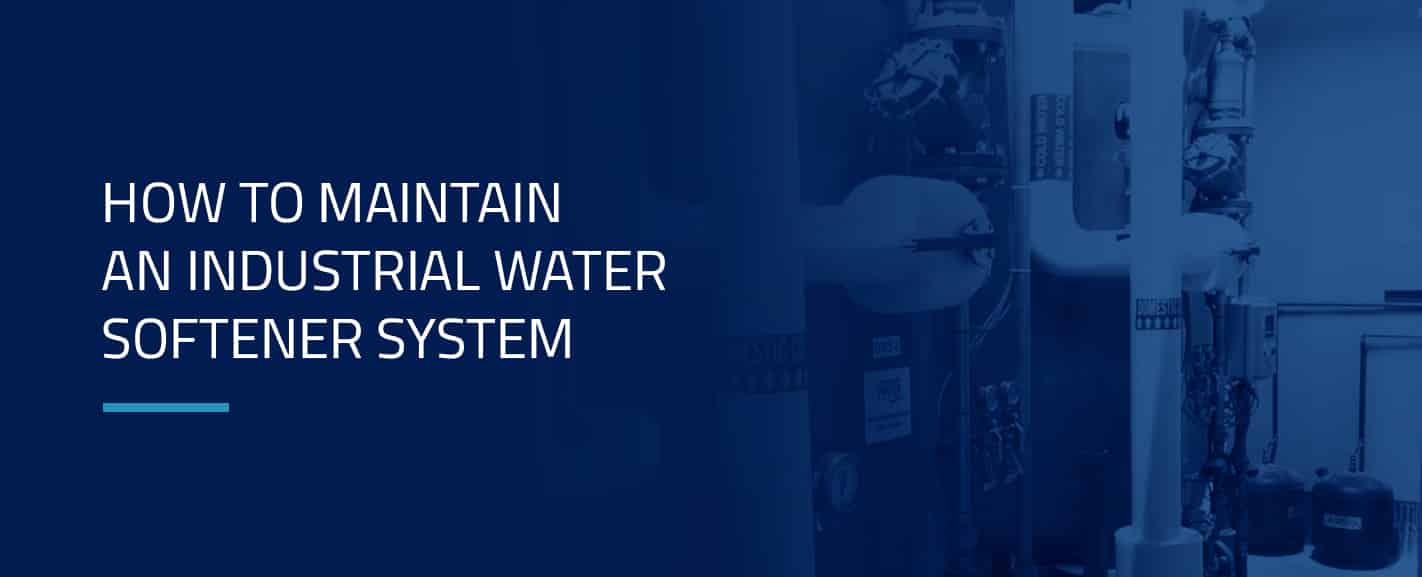
Are you wondering how to maintain an industrial water softener? A good preventative maintenance plan can help you avoid most softener failure issues. Today, people use softener systems for various applications, from general water conditioning to industrial ingredient water. A few manufacturers of valves control the softening function, and many agree that having a preventative maintenance plan in place can help with minimizing unplanned failures or downtime.
Most facilities test their softener system either once a shift or daily. That’s an effective strategy to see if your softener system is working or has failed, but it doesn’t always showcase all potential problems.
A thorough preventative maintenance plan can help with preventing issues. While you can perform this service in-house, having an experienced technician can be extremely valuable.
Industrial Water Softener Preventative Maintenance Tips
If you use an industrial water softener at your plant, you’ll need to know the proper inspections and maintenance to schedule. Below are several essential steps of the industrial water softener inspection and maintenance process.
1. Evaluation of Valve Wear and Tear
During preventative maintenance, your experienced water system technician will inspect the condition of your water softener’s valves. This maintenance involves pulling internal parts to verify wear and tear and replacing them if necessary.
For instance, your industrial water softener might have a stuck, clogged or leaky air valve. This issue can cause unwanted air discharge after a softener regeneration cycle. A trained technician can easily check and clean the air valve or replace it if necessary. Alternatively, your water softener might have a brine valve leak that causes the softener to use too much salt. An experienced professional can replace the faulty valve to get your industrial water softener functioning optimally again.
2. Brine Study
The technician who comes to inspect your water softener will often perform a brine study on your facility’s water to tell you how much salt is going into the water. Performing a brine study can determine if the softener is running efficiently.
A brine study uses an instrument called a salometer to measure the brine concentration at the water softener’s drain. During the brine cycle, the salometer records or graphs the percentage of salt traveling through the drain. Ideally, you would want to see 30% salt moving through the drain for 30 minutes. If not enough salt is getting into the water, the technician can make adjustments to increase the brine concentration and provide effective softening. Too much salt use, on the other hand, can indicate that the softener’s resin requires replacement.
3. Solenoid Replacement or Rebuild
The solenoid valve serves as a water meter and a flow restrictor for the water softener. It regulates the water flow by turning the water off and on in response to predetermined flow rates.
Eventually, the solenoid valve may wear out and require replacement or rebuilding. The calcium present in hard water can build up in the valve over time as limescale, eventually restricting the movement of the solenoid armature and reducing its ability to regulate water flow. A technician can repair or rebuild solenoids to permit effective water flow regulation.
4. Cleaning Pilot Screens
Over time, the pilot screens in industrial water softeners may become clogged with buildup or valve corrosion chips. This clogging can cause issues along the pilot line and in the multiport valve. The brine tank may overflow and the cycles may seem shorter. You may also find that your facility uses more salt than it did previously.
If your controller system is running hydraulically, cleaning the screens can help. Removing buildup from the screens allows the water to flow more freely and mitigates the performance issues associated with a clogged pilot screen.
5. Lubrication
Industrial water softener design includes many moving parts such as Fleck® softener pistons and AquaMatic® valve shafts. Lubrication on these essential components helps keep them gliding smoothly to provide optimal softener performance. It reduces friction to minimize wear and tear on these components, helping the pistons or shafts last longer to lower your repair and replacement needs.
6. Visual Inspections
During routine maintenance, your water system technician will likely perform a comprehensive visual inspection of the softener. The technician can evaluate the condition of critical components to identify malfunctions and places for potential upgrades.
Visual inspection of a water softener usually includes several evaluative elements:
- Checking components for leaks: Visual inspections of tanks, external pipes and valve pistons can verify leaking points. The technician can then fix the leaks or replace broken parts before minor leaks become major issues requiring significant repairs.
- Checking the brine tank level: The brine tank level can provide valuable information about leaks. A high water level in the brine tank often means the brine valve is leaking. A technician should address this issue before the brine valve fails and overfills the tank, causing excess salt dissolution and waste drainage.
- Assessing pressure gauges: The technician should check the pressure gauges on the industrial water softener’s inlet and outlet. Doing so can often indicate systemwide issues to investigate in more detail.
- Evaluating the control and control valves: The electronic controllers on an industrial water softener provide a wealth of useful system information, including average daily usage, peak flows, peak flow times, remaining gallons and total capacity. The technician should also check control valves for evidence of wear and tear. A leaking weep hole on an AquaMatic® valve, for instance, almost always indicates the need for a rebuild.
- Inspecting the drain: The drain provides clues about leaks and resin degradation. The drain itself may be leaking, or if water flows through the drain while the softener isn’t regenerating, the valves may be failing. The drain may also contain bits of resin if the resin is deteriorating.
7. Resin Testing
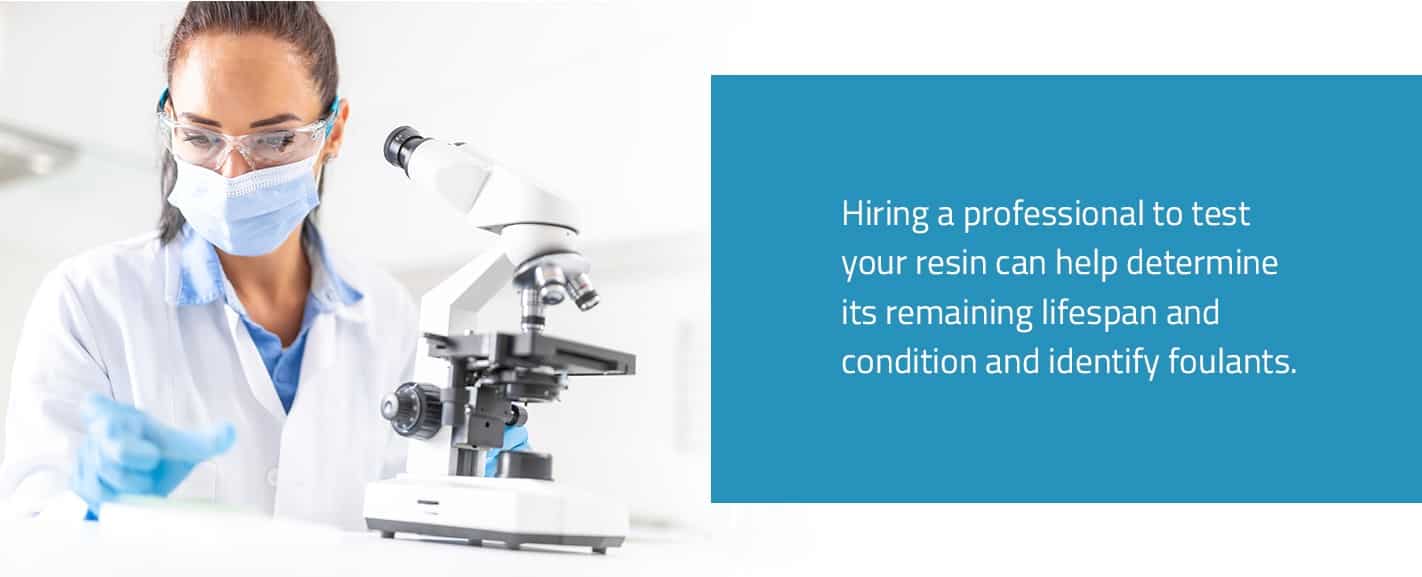
Hiring a professional to test your resin can help determine its remaining lifespan and condition and identify foulants. This process often involves taking core samples from the resin bed where ion exchange occurs. Analysis of these samples provides valuable information about metrics like capacity, moisture and percentage of broken resin.
8. Checking Backwash Flow Controllers
The backwash flow controllers are the components of your industrial water softener that send water flowing upward over the resin, rather than downward, the way it flows during ion exchange. Backwash is essential for removing debris and broken resin beads and resetting the resin for further ion exchange. Checking and cleaning backwash flow controllers can ensure you have enough flow for backwash and no restrictions for brine.
8. Assessing Resin Level
Checking the resin level can help determine if you have enough resin in the softener. A certain amount of resin loss is natural over the softener’s life span — and often, you can extend the life of your existing resin by topping it up to increase capacity. Eventually, you may need to replace the entire resin.
9. Monitoring Pressure Gauges
Monitoring the pressure gauges in your industrial water softener is an essential component of routine maintenance. Knowing your pressure drop across the softener can help you determine what additional problems may occur. Minimal pressure is often optimal — high pressure loss can indicate degraded resins, improper valve function or clogged distributors.
10. Installing a Compound Gauge
Installing a compound pressure gauge that shows both pressure and vacuum helps verify the proper operation of your industrial water softener. You can monitor the pressure with this gauge and keep an eye out for high pressure drops. When you observe negative numbers on the gauge, you’ll gain information about the negative, vacuum-related pressures in the system.
11. Cleaning the Brine Tank
Taking the time to clean the brine tank annually can help with proper brine injection. Cleaning the tank generally involves disconnecting all lines and hoses, draining the tank, removing and discarding any remaining salt and then scrubbing the tank with a cleaner such as a bleach solution.
During this time, you can also inspect and clean the brine valve. Sometimes salt sludge and dirt can clog the valve, causing brine issues.
Contact Complete Water Solutions for Your Water Softener Needs
If you use water softener for commercial use and need an inspection, make Complete Water Solutions your trusted source. We can perform a comprehensive assessment to give you a clear picture of your water softener’s condition and needs. We’re also happy to consult with you about establishing a preventative maintenance program for your building water softener system. Feel free to ask about industrial water softener prices if you need a new system.
When you work with us, you’ll gain access to the inspection and maintenance services of our highly trained and experienced technicians. We’re quick to respond via email or phone, usually taking no more than 30 minutes to an hour to get back to you. We also pride ourselves on our quick service and our focus on genuine communication, always taking the time to talk to our clients and determine how we can best optimize your water softener for industry use.
Contact us today to schedule an inspection to maintain an industrial water softener system.
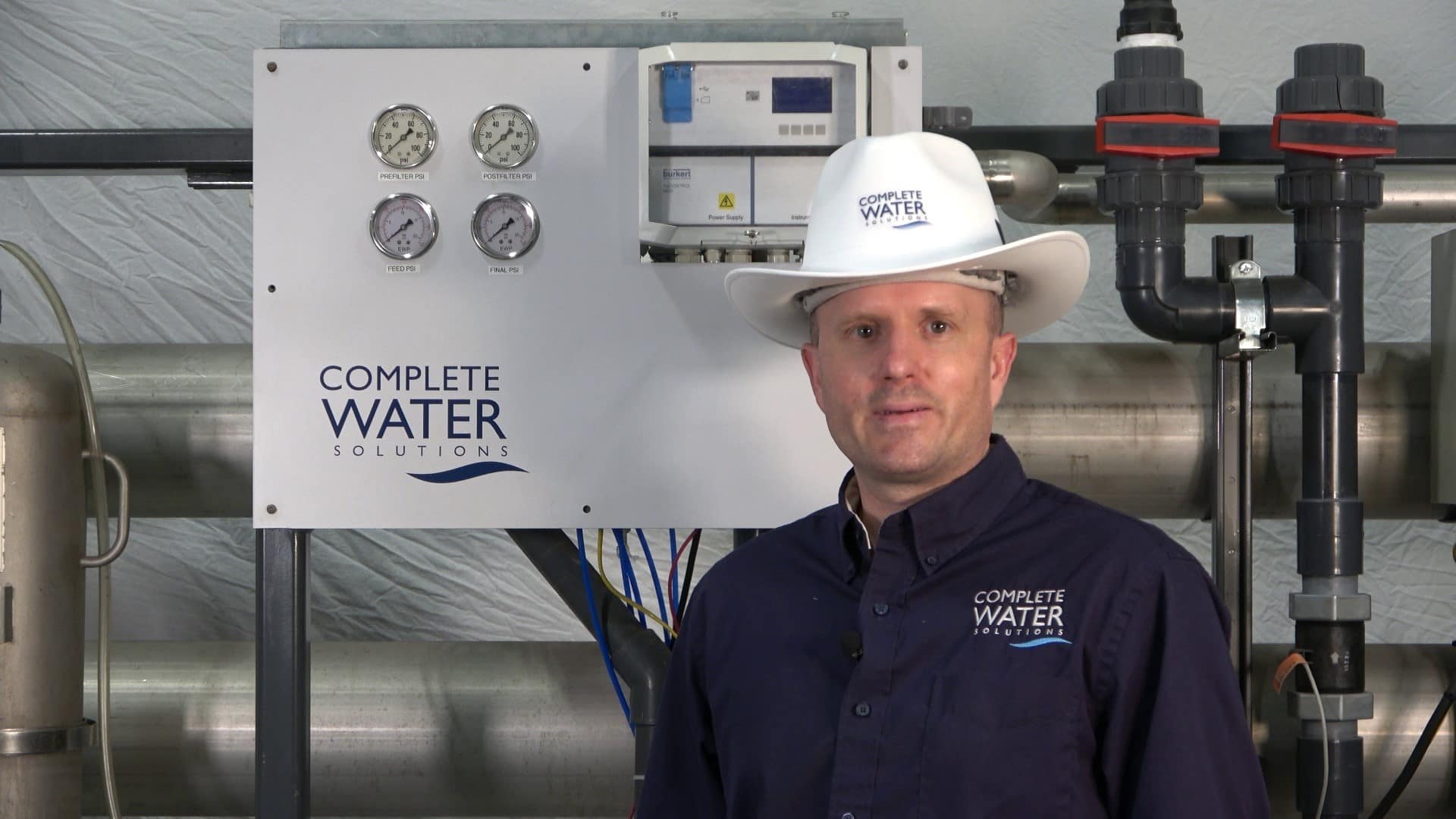
With over 30 years of hands-on experience in the water treatment industry, Nathan Olszak is a trusted water treatment expert. He specializes in designing, engineering, and servicing water treatment systems. As the owner of Complete Water Solutions, Osmonics, and Membrane Cleaning Pro, Nathan has built a reputation for delivering customized water treatment solutions that enhance efficiency, reliability, and water quality across various industries, including the medical, commercial, and manufacturing sectors.
Nathan’s journey in water treatment began as a service technician. He gained in-depth knowledge by working with all major brands of equipment, including Veolia, Suez, Bruner, Culligan, Pentair, Aquamatic, Osmonics, GE Water, Marlo, Lakeside, Fleck, Autotrol, US Filter, ION Pure, Siemens, Evoqua, and many others. This hands-on expertise, combined with his technical certifications, has made him a leader in water system engineering and water management.
Credentials & Expertise
- Certifications: David H. Paul Reverse Osmosis Certification, PLC Programming
- License: Power Plant Operating Engineer 3rd Class
- Specialties:
- Design & engineering of water treatment systems and advanced water systems
- Custom water filtration systems and solutions
- Installation, automation, and repair of water treatment systems
- Expertise in Reverse Osmosis (RO), Deionization, Water Softening, Carbon Filtration, Iron Filtration, UV Treatment, Ultrafiltration (UF), Process Filtration, CEDI/EDI, and more
- Specialized knowledge in Boiler Feed Water, Tower Makeup Water, and drinking water production for industries such as bottling, pharmaceuticals, and food processing
- Project management and reclaiming of water system waste for other uses
- Evaluation of raw water sources and potential contamination risks
- Industrial water treatment strategies to prevent corrosion and optimize system performance
- Boiler water treatment to enhance energy efficiency and system longevity
Nathan’s commitment to excellence extends beyond equipment sales and service. He works closely with clients to develop tailored water treatment services that optimize performance and meet their operations’ unique demands. His expertise covers methods that mitigate water impurities, ensure fresh water accessibility, and maintain regulatory compliance. It also includes the design of high-efficiency reverse osmosis systems for industrial use.
Nathan focuses on the latest technology in water conditioning, water softeners, filters, and pumps to improve maintenance and efficiency. His experience in laboratory testing and biofilm control ensures the highest industry standards in water treatment processes and water management.
Additionally, his deep understanding of infrastructure and water data analysis provides long-term, cost-effective solutions that promote health and safety. His expertise ensures that businesses receive top-tier, quality water treatment solutions.
For insights into the latest industry trends, innovations, and best practices, explore the Complete Water Solutions Blog, where Nathan shares valuable information on water filtration systems, sustainability, and water solutions engineering.
Give Us A Call (855) 787-4200 or Email info@complete-water.com


